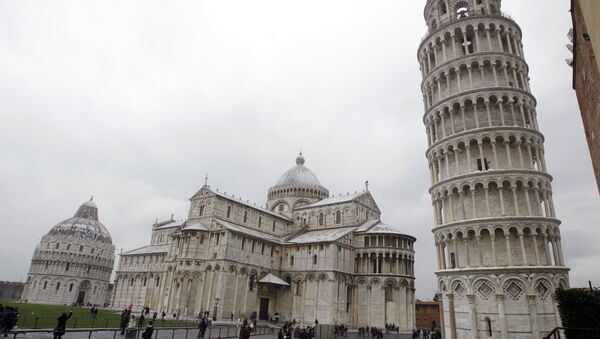Seismologists and historians believe they have figured out why the fabled leaning Tower of Pisa does not complete the job it began centuries ago, and topple to the ground in one of Italy's endless series of powerful earthquakes.
Begun in 1173 and completed in 1372, the free-standing bell tower — almost entirely constructed of solid marble — began to lean almost immediately due to an inadequate nine-foot foundation placed in soft topsoil, and has stayed that way for almost seven hundred years.
As Italy gets devastating earthquakes on a routine basis due to its proximity to the meeting of the Eurasian and African tectonic plates, many have noted how the Pisa campanile — so obviously at risk — had not fallen over completely.
The Italian government in 1964 announced the solicitation of public thoughts on preventing the tower from collapsing, and received a wealth of proposals — some doable, some crackpot — including the use of liquid nitrogen and deep soil extraction to keep the tourist attraction and ancient landmark upright.
But despite the concern, the tower appears to be stable, in spite of its drunken tilt, withstanding earthquakes pushing upwards past the 6.0 Richter Scale designation.
After deeper inquiry, scientists now assert that the soil in which the bell tower is embedded —and what played such a key part in the tower's storied lean — plays an integral part in protecting it during powerful earthquakes.
The tower's 183-foot height, when measured against with the stiffness of its marble building blocks and overall weight, also contribute to its upright character.
It turns out that the soil, the tower's height, as well as the density and stiffness of the material when combined with its overall weight uniquely dampen what are termed the ‘vibrational characteristics' of the structure, significantly limiting any resonance with ground movements caused by earthquakes.
"Ironically, the very same soil that caused the leaning instability and brought the tower to the verge of collapse, can be credited for helping it survive these seismic events," stated George Mylonakis of the University of Bristol.
Mylonakis, alongside Italian scientists at the Roma Tre University created the study, and released their findings last week.



